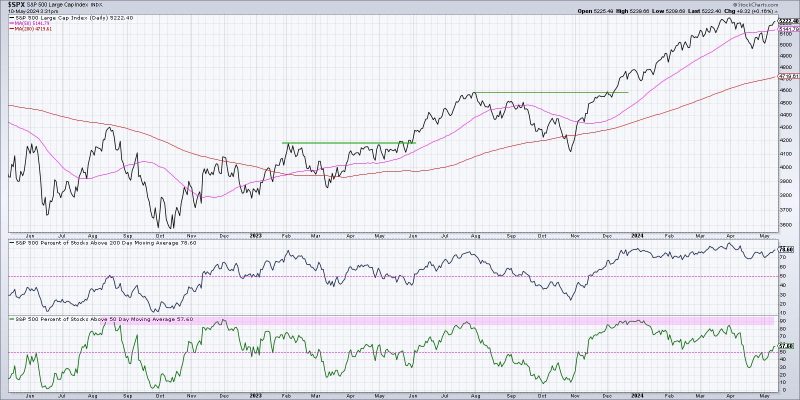The realm of stock market trading is a universe unto itself, with many complexities and tactics making up the world of trading. One of the quintessential aspects that every investor should study and understand is market breadth. Breadth indicators provide vital insights into market trends, as they give a unique perspective on the overall health of the market, which in turn assists in predicting market reversals. We will delve deeper into three essential breadth indicators that can help confirm bullish market trends: The Advance/Decline Line (AD Line), the McClellan Oscillator and Summation Index, and the Percentage of Stocks Above Their 50-day Moving Average.
The first encounter in our exploration involves the Advance/Decline Line (AD Line). The AD Line is one of the most widely utilized breadth indicators. It bestows the power to assess the level of participation in an upward or downward move in the market. This indicator sums up the number of stocks that advance and decline at the NYSE daily. An upswing in the AD line indicates that a considerable chunk of stocks is propelling the market upward, confirming a bullish trend. A bullish divergence, where the AD line continues upward despite a flat market or slight downturn, often indicates impending upward market action.
We sail next towards the McClellan Oscillator and Summation Index. Created by Sherman and Marian McClellan, these are other significant breadth indicators that provide a perspective on the vigor of a market’s movement. The McClellan Oscillator adopts the difference between the number of advancing and declining issues on the New York Stock Exchange (NYSE) to draw a comprehension of the breadth of the market’s momentum. A higher positive value signifies robust upward momentum, thus confirming a bullish market scenario. The Summation Index, on the other hand, is the expanded version of the McClellan Oscillator, consigning a longer-term perspective. A rising Summation Index underscores a strengthening bullish momentum.
The final stop on our breadth indicators voyage takes us to the Percentage of Stocks above their 50-day Moving Average. This indicator offers a clear visual representation of the state of the market, showing the percentage of stocks trading above their 50-day moving average at any given point. A high percentage is indicative of a generally bullish market. This tool plays a crucial role in revealing undue market optimism or excessive pessimism, thus confirming trends and offering potential warning signs for reversals.
To sum up, the world of stock markets is highly volatile and unpredictable, and hence the utilization of tools like market breadth indicators becomes essential. The Advance/Decline Line, McClellan Oscillator, Summation Index, and the Percentage of Stocks above their 50-day Moving Average are three convenient and efficient breadth indicators to confirm bullish market trends. As we navigate the turbulent waters of the stock market, these tools act as guiding lights, illuminating our path, and enhancing our possibilities of a successful journey.
